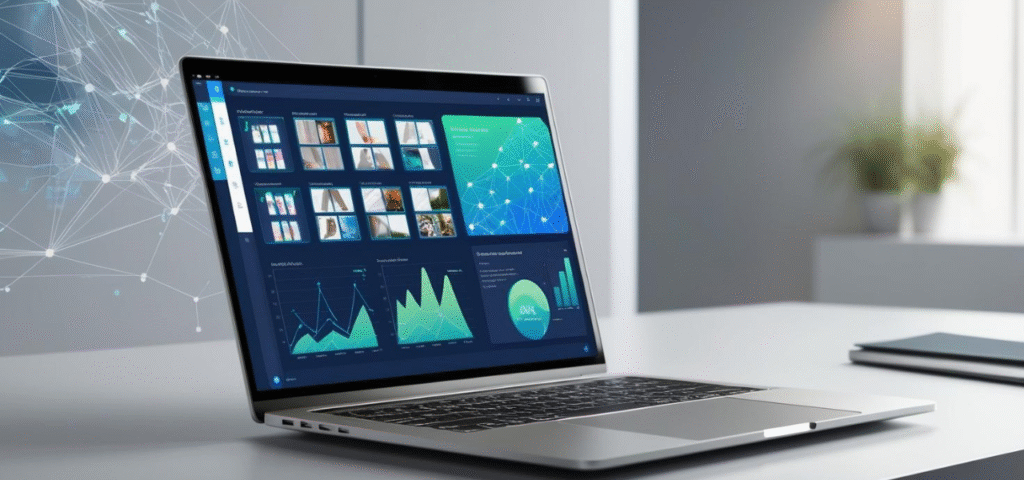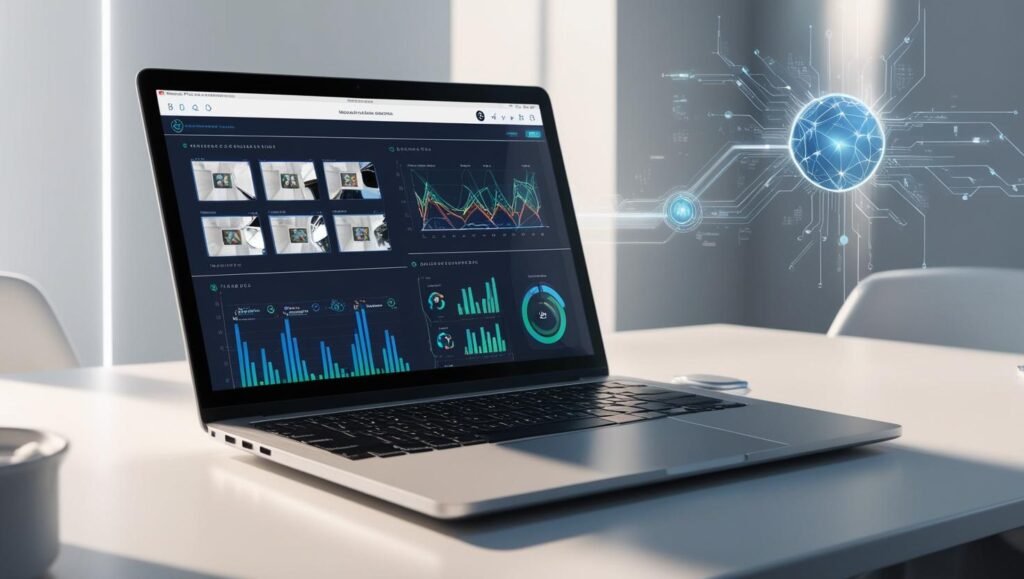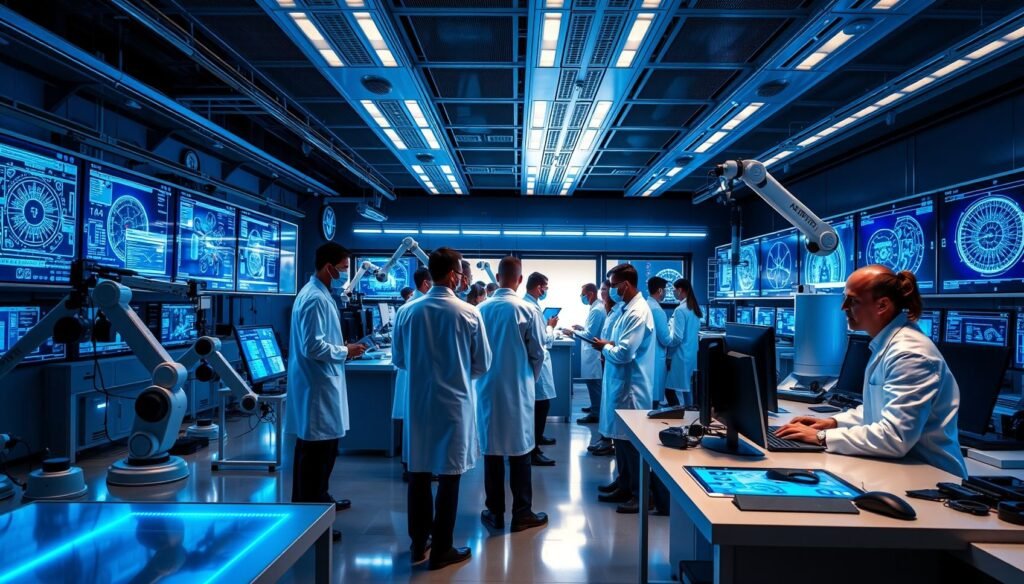Understanding GPT-4o Vision: An Overview of Multimodal AI Capabilities
GPT-4o Vision brings a groundbreaking leap in AI image recognition through its unique multimodal capabilities. By integrating visual data with text input, GPT-4o Vision demonstrates a significant advancement over earlier models, allowing for more nuanced understanding and interaction with images. This combination of modalities enables users to leverage both text and visuals, paving the way for more advanced applications in various fields, such as education, healthcare, and creative industries.
What is Multimodal AI?
Multimodal AI refers to systems that can process and analyze data from multiple sources simultaneously, such as text, audio, and images. GPT4o Vision’s architecture is designed to harness this potential, allowing it to understand context and semantics in a more holistic manner. For instance, it can analyze an image and generate descriptive text, or vice versa, creating a seamless interaction between different types of data. This capability not only enhances the accuracy of data interpretation but also allows for more user-friendly applications. For more on the basics of multimodal AI, consider exploring our article on GPT-4o comparison with Gemini AI.
Unique Capabilities of GPT-4o Vision
One of the standout features of GPT4o Vision is its ability to perform advanced image recognition tasks. It can identify objects within a scene, understand spatial relationships, and even recognize text embedded in images. These features make it valuable for applications ranging from accessibility tools for the visually impaired to enhancing search engine capabilities. For a detailed look at innovative technologies in AI, check out our overview of features and innovations of GPT4o.
Moreover, GPT4o Vision’s capability to generate descriptive narratives from visual inputs opens new avenues for content creation and storytelling. By blending artistic aspects with data analysis, it empowers users to produce rich multimedia content, which can greatly enhance learning experiences, especially in educational settings. You can find more information about how AI is impacting education in our discussion on OpenAI’s role in revolutionizing education.
In summary, GPT4o Vision exemplifies the future of AI image recognition and multimodal AI, showcasing its potential to transform how we interact with digital information. As this technology continues to evolve, we can anticipate even more innovative applications that will reshape various sectors, making interactions smarter and more intuitive.

Setting Up GPT-4o Vision for Image Analysis
Configuring GPT4o Vision for effective and efficient image recognition involves a series of systematic steps. By following this guide, you’ll be able to harness the power of AI image recognition through this sophisticated multimodal AI system.
Step 1: Creating an OpenAI Account
First, if you haven’t already, register for an account on the OpenAI platform. This will provide you with access to the necessary APIs and tools needed for deploying GPT4o Vision.
Step 2: Installing Required Libraries
Next, ensure that you have Python installed on your machine. You can install the required libraries, including OpenAI’s API client, by running the following command in your terminal:
pip install openaiStep 3: Setting Up API Keys
After installation, retrieve your API key from the OpenAI website. You’ll need to set this key in your code to authenticate your requests:
import openai
openai.api_key = 'your-api-key'Step 4: Configuring Image Input
For image analysis tasks, you’ll need to have your images prepared. Ensure they are in a supported format (such as JPEG or PNG) and accessible via their file path. You might want to use libraries like Pillow to manipulate images if necessary.
Step 5: Initiating Image Analysis
Create a function that sends your image data to the GPT-4o Vision API for analysis. Here’s a simple example:
def analyze_image(image_path):
with open(image_path, "rb") as image_file:
analysis = openai.Image.create(file=image_file, model="gpt-4o-vision")
return analysisStep 6: Interpreting the Results
Once you receive the analysis, you can extract insights based on your specific requirements. The API will return structured data which you can parse and utilize in your applications. Make sure to handle errors properly to ensure your application runs smoothly.
Step 7: Exploring Further Applications
Once you’ve set up the basics, consider exploring advanced multimodal AI capabilities, such as combining image recognition with natural language processing to enhance the user experience. You can check out more on this topic by visiting our exploration of AI technologies.
By following these steps, you can effectively set up GPT4o Vision for image analysis. It opens up new opportunities for utilizing advanced AI image recognition in various applications.
Interpreting Images with GPT-4o Vision: Real-World Use Cases
GPT-4o Vision is revolutionizing the way we approach image analysis through its advanced AI image recognition capabilities. This multimodal AI system can interpret various types of images and provide insights across different industries. Here are some practical examples of its application in real-world scenarios.
1. Healthcare: Diagnosing Medical Conditions
In the medical field, GPT-4o Vision can analyze diagnostic images such as X-rays and MRIs to assist healthcare professionals in identifying potential issues. For instance, it can help detect tumors or fractures, highlighting areas of concern with precision. This capability not only enhances diagnostic accuracy but also speeds up the decision-making process for treatments. A study published in the Journal of Medical Internet Research emphasizes how AI image recognition can significantly assist radiologists in improving detection rates.
2. Retail: Enhancing Customer Experience
In retail, GPT-4o Vision can streamline operations by analyzing product images and customer interactions. By assessing customer preferences and product performance, retailers can customize marketing strategies to improve engagement. For instance, a store can use this technology to recognize styles and recommend similar items to customers browsing online, leading to increased sales. An example of this application can be witnessed in advanced AI technologies enhancing user experiences.
3. Agriculture: Monitoring Crop Health
Farmers are increasingly turning to GPT-4o Vision for crop monitoring and health assessment. By analyzing drone-captured images of fields, the AI can identify areas suffering from disease or pest infestation. This allows for precise action and resource allocation, ultimately leading to higher yields. Research from the Frontiers in Plant Science journal highlights how image recognition technology can provide actionable insights for sustainable farming practices.
4. Security: Surveillance and Threat Detection
In security, GPT-4o Vision enhances surveillance capabilities by recognizing potential threats in real-time video feeds. The system can identify unusual behavior or unauthorized access, facilitating quicker responses to security breaches. This is particularly crucial for urban safety and crime prevention, as reported by research in the field.
5. Education: Assisting Visual Learning
Lastly, in education, GPT-4o Vision can be used to enhance visual learning by interpreting educational images, such as diagrams or maps. It can provide explanatory text alongside images, fostering a deeper understanding for students. This interactive approach aligns with the growing trend towards data-driven learning methodologies.
Incorporating GPT-4o Vision for image analysis not only improves efficiency but also opens new doors for innovation across various sectors. By understanding these real-world applications, organizations can leverage this technology to enhance their operations and improve outcomes. For further insights into integrating AI technologies, check our guide on AI tools for productivity.
Leveraging GPT-4o Vision for Enhanced AI Image Recognition
With the advent of GPT-4o Vision, the field of AI image recognition has seen significant advancements, allowing users to analyze images more effectively than ever. This section will highlight some advanced techniques and strategies to enhance the capabilities of GPT-4o Vision in various image analysis scenarios.
1. Understanding Multimodal AI Integration
GPT-4o Vision excels due to its multimodal AI architecture, which means it can process both visual and textual information. This dual capability allows you to feed context into the image recognition process. For example, by providing descriptive text alongside an image, you can significantly increase the model’s accuracy in identifying elements within the image. Utilizing this integration effectively can transform mundane analysis tasks into rich, contextual assessments.
2. Training with Diverse Image Datasets
To maximize the effectiveness of GPT-4o Vision, consider training the model with a diverse set of images. The more varied the dataset, the better the model performs in recognizing different objects, settings, and attributes. It is crucial to include images with various lighting conditions, angles, and backgrounds to enhance the model’s robustness. Resources like Kaggle offer extensive datasets that can be leveraged to refine your model.
3. Fine-Tuning with Custom Annotations
Custom annotation of images can significantly optimize your results with GPT-4o Vision. By labeling images according to specific categories relevant to your analysis needs, you can guide the model to understand and prioritize certain features. This approach allows for precise control over the outputs and aids in achieving tailored results that align with your objectives.
4. Utilizing Feedback Loops
Creating a feedback loop is essential in image recognition tasks. After deploying GPT-4o Vision, keep track of its accuracy and the types of errors it makes. Using this information, you can continually refine the model by adjusting the training data, modifying image representations, or enhancing annotation quality. This iterative process, enriched by real-world feedback, can lead to continuous improvements in the model’s performance.
5. Real-World Applications and Use Cases
GPT-4o Vision can be harnessed for various applications, such as in healthcare for diagnostic imaging, in security for monitoring surveillance footage, and even in agriculture for crop analysis. Each application can benefit from the unique properties of AI image recognition, enabling sophisticated analysis that informs decision-making. The comparison between Gemini AI and GPT-4o illustrates the competitive edge of utilizing advanced image recognition tools in specialized domains.
In conclusion, leveraging GPT-4o Vision for enhanced AI image recognition involves a combination of understanding its multimodal capabilities, utilizing diverse datasets, and fostering an iterative improvement process driven by real-world applications. By employing these strategies, you can effectively maximize the potential of this powerful technology.
Visualizing Results: Diagrams and Insights from GPT-4o Vision
When it comes to interpreting the results of GPT-4o Vision, effective visualization is key. Transforming complex data outputs into clear and actionable insights not only enhances understanding but also facilitates better communication of findings. Here’s how you can utilize diagrams and visual aids to present GPT-4o Vision’s image analysis results compellingly.
Creating Informative Diagrams
Begin by identifying the primary insights derived from your image analysis. This could be anything from identifying objects within images to extracting detailed features such as color, texture, and shapes. To share these insights easily, consider using infographics or charts that correlate with the data results.
For instance, if GPT-4o Vision identifies different species in a wildlife image, a comparative diagram showcasing each species alongside its key attributes can quickly communicate the analysis’s findings. Tools like Canva or Microsoft Power BI can be particularly effective for creating such visuals.
Data Visualization Techniques
Leverage various data visualization techniques that highlight the strengths of GPT-4o Vision output while maintaining clarity. For quantitative data, bar graphs or pie charts can illustrate the distribution of identified elements effectively. For qualitative analysis, word clouds or hierarchical charts can summarize key themes or features extracted from images.
Incorporating color coding can enhance interpretability, allowing viewers to identify categories at a glance. For instance, in a diagram depicting the results of analyzing multiple images, use distinct colors for different object classes detected by GPT-4o Vision, making it easier to differentiate between, for example, animals, plants, and inanimate objects.
Incorporating Explanatory Text
Aside from visual elements, pairing diagrams with concise, explanatory text reinforces understanding. Summarize key findings succinctly and provide context to the diagrams, guiding the audience through your insights. Highlighting how these results can be applied practically—such as in conservation efforts or urban planning—enhances the relevance of your analysis.
Remember, the goal is to simplify complex data into digestible formats without losing the depth of insight provided by the advanced capabilities of GPT-4o Vision. This approach not only makes your analysis easier to comprehend but also drives actionable outcomes based on informed decisions.
For further insights into maximizing the use of GPT-4o Vision and understanding its innovative features, check out our article on the features of GPT-4o which explores its applications in various fields.
Sources
- Digihetu – Features and Innovations of GPT-4o
- Digihetu – AI Tools for Solopreneurs: Top 5 Productivity Apps to Boost Success
- Digihetu – DALL·E 3: Unlocking the Future of OpenAI Image Generation and AI Art Tools
- Digihetu – Comparison Between Gemini AI and GPT-4o
- Digihetu – Exploring Stable Diffusion XLS: Revolutionary AI Capabilities
- Digihetu – OpenAI Revolutionizing Education Through Data-Driven Innovation
- Digihetu – XAI GROK: Revolutionizing User Experience Through Advanced AI Technology
- Frontiers in Plant Science – Monitoring Crop Health Using AI
- Journal of Medical Internet Research – AI in Medical Imaging
- ScienceDirect – The Role of AI in Urban Safety



